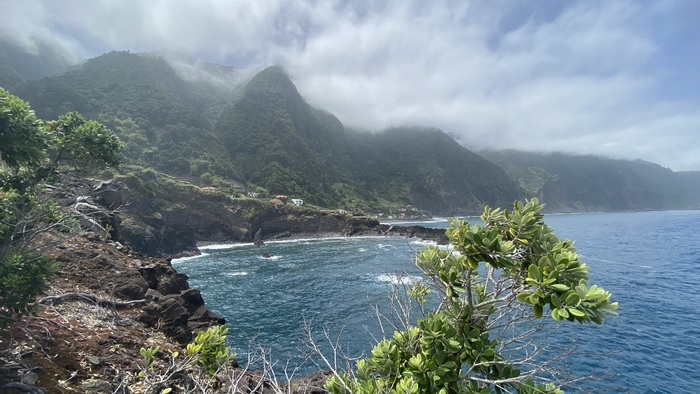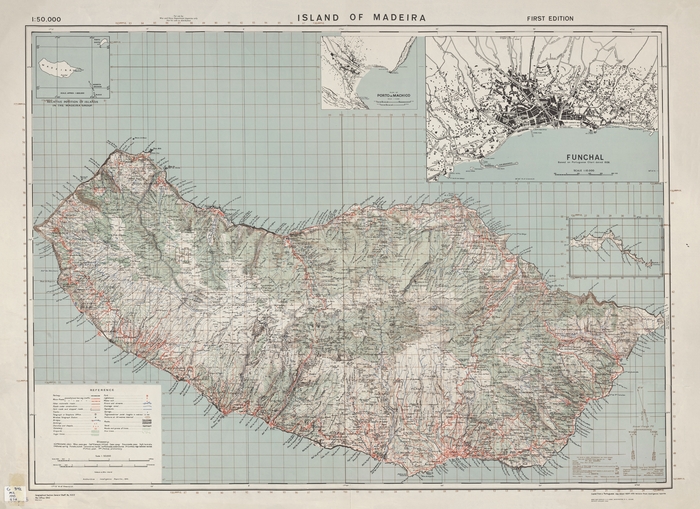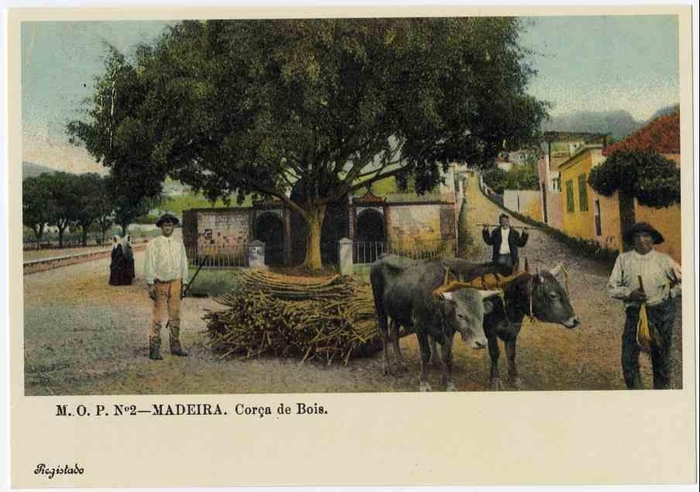
Discovered in 1419 by the Portuguese, the small island of Madeira was immediately put under cultivation and found itself covered with vines, wheat and cane, the first stalks of which were imported from Sicily. Sugar cane required a lot of water. The tiny terraced plots ("poios") were established on particularly steep terrain. A network of levadas was then built, canals that distributed water by gravity to the most inaccessible places, and to the first sugar mills (" engenhos ").
In 1466, sugar established itself as the true white gold of the island. It was mainly destined for the African and Mediterranean coasts, and for northern Europe. It was in Madeira that the foundations of the technologies for the production of cane and sugar, still in force today, were laid. The 16th century brought its first challenges. Competition from the New World arrived, and quickly a surplus of production and an exhaustion of the soil occurred. This trend was confirmed in the 17th century. However, an important milestone was set in 1649, the year in which the first aguardenteiro (brandy maker) was recorded.
The cane gives way to the vine
At the beginning of the 18th century, there was only one engenho left in operation. The vine was irremediably taking over from the cane. Madeira wine was a fortified wine. This meant that its fermentation had to be stopped using a brandy. Those from Portugal and France were reputed to be excellent, but not exactly cheap. Thus, the production of local aguardente de cana ("cane brandy") remained current. The Madeiran authorities supported it by subsidizing imports of Charente stills. Meanwhile, the introduction of the steam engine made the work of the mills easier. Farmers began to reconcile themselves with the cultivation of cane.
Later, in 1822, the authorities even banned the importation of any foreign alcohol intended for fortifying wine. However, the English, who were both the main brandy merchants and major customers of Madeira wine, expressed their discontent and quickly obtained a return of Charente spirits . Things took off in the middle of the 19th century, with the arrival of the distillation column. Then phylloxera decimated the vines, and sugar cane became the priority again. A certain William Hinton set up his Fabrica do Torreão in the capital Funchal. This Englishman, who arrived in 1838, would quickly become a sugar giant who would enjoy a quasi-monopoly. In the meantime, he had to deal with a devastating fungus. This would only be eliminated by the introduction of new varieties of sugar cane at the end of the 19th century.
The appearance of agricultural rum
At that time, as everywhere else in the world, molasses rum dominated. Pure cane juice was reserved for sugar, but the first agricultural rums appeared. Until the 1930s, there was a golden age of Madeira rum. However, it was still used much more in the fortification of wine than in everyday consumption. In 1974, with the liberalization of the use of foreign alcohols for fortification, aguardente de cana was no longer used (today only neutral alcohol is used). At the end of the 1980s, the Hinton and Machico factories closed their doors.
Since then, sugar cane has been entirely devoted to agricultural rum and cane honey. These two products survive as best they can, with plantation areas that have gone from 6,500 ha in the 1930s to only a hundred. The job is difficult, candidates are rare. The available spaces are also difficult, because in the meantime an easier, more profitable crop harvested all year round has taken hold: the banana. At the beginning of the 2000s, thanks to the tourist attraction that rum and cane produce, the sector was encouraged and supported by the General Secretariat for Agriculture. The cultivation of poncha , a real institution, is still very much alive and proving to be an excellent ambassador.
Poncha, or the art of living in Madeira
Poncha is a traditional cocktail, born from the historical exchanges between Portugal, the British and India. Its name is thought to come from panch. This word means five in Sanskrit, and also gave punch in English. The five basic ingredients were water, alcohol, fruit, sugar and spices. But the traditional Madeira recipe today is composed of one measure of rum, one measure of lemon juice, one measure of honey (bee, not cane).
The whole thing is vigorously stirred in a pitcher until a nice foam is produced, using a stick specially designed for this purpose and nicknamed caralhinho (a word whose modesty prevents me from giving you the translation). Variations exist with other ingredients from the island. You can then find orange or passion fruit as ingredients. To taste a traditional poncha, go early in the morning to the back of the A Mercadora stall, near the big market of Funchal.
The current situation
Sugarcane cultivation extends roughly from the southwest to the northeast of the island. There are six varieties, three of which are truly dominant. The cana rocha (red-purple), productive and resistant, is the most widespread. The green-yellow cane Nco310 is thick and heavy, but offers a similar yield to the previous one. Finally, the queen cane is the canica , a fine, delicate and tasty variety. It is rare because it is difficult to cultivate.
Three-quarters of the 10,000 tons of cane harvested each year go into the production of rum. The rest is dedicated to cane honey. This juice, cooked until reduced by a third, is used in particular to make the succulent bolo de mel. The harvests extend from mid-March to the end of May. They are necessarily done by hand, given the difficulties imposed by the terrain. The cane is stripped and topped one or two weeks before being cut. This allows the sugar to be concentrated by dehydration. Planning and spreading out supplies is a challenge for small distilleries that are equipped with small mills. Deliveries are often made in large batches, especially on weekends, when family labor is available.
Protected Geographical Indication Agricultural Rum of Madeira
The aromatic profile and production methods have been guaranteed by a Protected Geographical Indication Rum da Madeira since 2011. It is the IVBAM (Institute of Wine, Embroidery and Crafts of Madeira) which certifies, regulates, but above all supports and promotes the agricultural rums supervised by this GI. This includes technical standards, but also organoleptic ones. They are verified by a tasting committee, like the AOC Martinique .
The most bottled rum, by far (95%), is the natural white, most of which is consumed in poncha, on site. The aging in oak barrels is 3 years minimum. Then the age accounts are incremented in increments of 3 years. For vintages or age accounts, it is the youngest of the blend that must appear. No additions are allowed, with the exception of caramel to adjust the color. Proof that the GI leaves room for identity and creativity, the six distilleries currently grouped there all have a certain singularity.
We will return to these distilleries soon, with a little guided tour!
In any case, a real identity emerges from this Madeira production. It shows a natural character without being wild, as authentic as it is in balance and control. The quality is displayed from the first classic white rums , which are already flying with the best in the agricultural rum category. It has improved significantly from year to year. The "top of the range" is therefore both a fact and a necessity, the quantities of cane being very small. Valorization will therefore be the key in the future. But the success encountered during the festivals as well as the growing interest of independent bottlers already seem to be doing their work.




